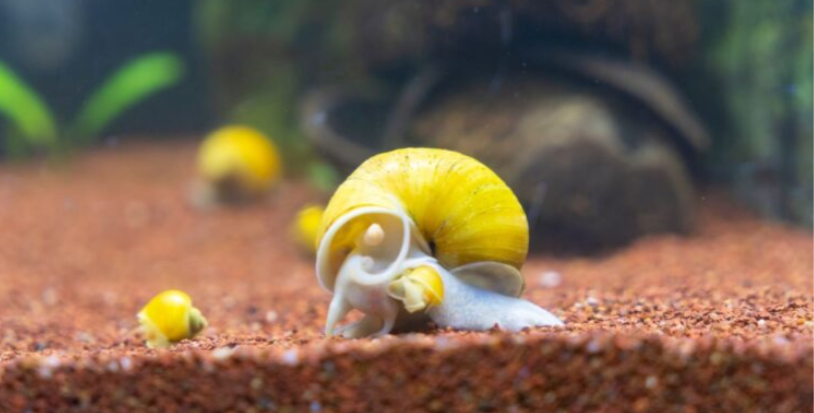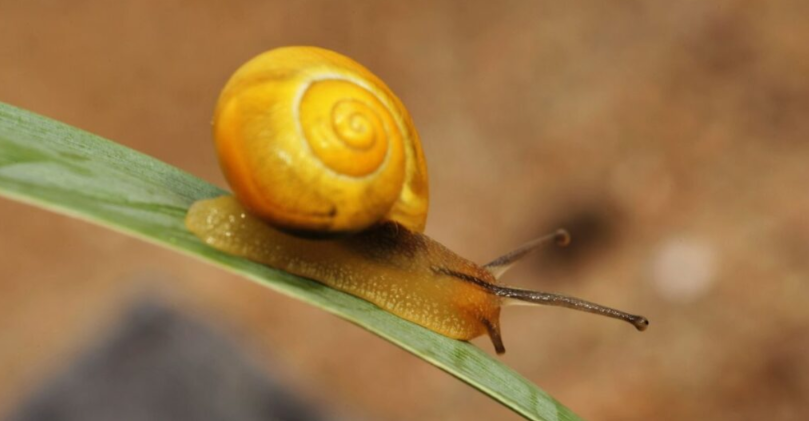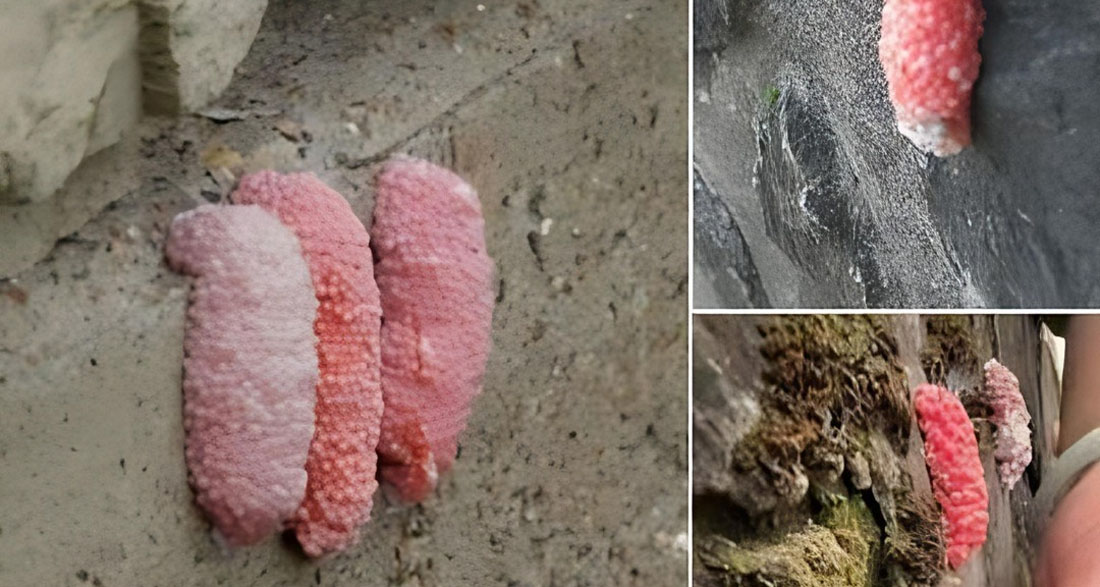The Hidden Danger in Your Garden: Apple Snail Eggs
Imagine you’re strolling through your garden when you suddenly notice clusters of small, bright pink eggs. At first glance, they might seem harmless—maybe even pretty. But don’t be fooled! These pink eggs are the work of the apple snail, an invasive species that can cause serious damage to plants, crops, and local ecosystems. Originating in South America, these snails have spread around the world, leaving destruction in their wake.

The Apple Snail: A Giant Among Snails
Apple snails are not like the small, harmless snails you usually find in a garden. They are big—sometimes as large as 10 centimeters wide! These freshwater snails thrive in wet places like ponds, lakes, and swamps, and they prefer warmer climates. They are excellent at spreading quickly, and once they’re in an area, they are difficult to get rid of.
“Once they settle in, they spread fast,” says biologist Dr. Karen Lano. “Their size, speed of reproduction, and adaptability make them a real problem.”
The snails lay their eggs in clusters of 400 to 600, and the eggs are typically bright pink or orange. Each egg is about the size of a pencil tip, but the numbers are what make them so dangerous. A single cluster can turn into hundreds of snails in no time.
Why Are Apple Snails So Invasive?
Apple snails are one of the most invasive species in the world. They’ve traveled far from their home in South America and can now be found in places like Florida, Texas, California, Spain, and France. This is largely because they adapt easily to different environments. Thanks to global warming and increased trade, they’ve been able to move to new areas and thrive.
Apple snails are aggressive eaters. They munch through a wide range of plants, including crops and aquatic plants that are vital for local ecosystems. In Southeast Asia, they were introduced in the 1980s and have since destroyed rice fields, leading to huge financial losses. Their appetite for plants makes them tough competitors for local species, often driving them out and causing a loss of biodiversity.

“We never thought these snails would spread this far,” says farmer Chai Son, who witnessed his rice fields being decimated. “We thought it was just a small problem. Now, it’s a catastrophe.”
Apple Snail Eggs: A Warning Sign
If you spot clusters of pink eggs in your garden, it’s important to act fast. These eggs are one of the clearest signs that apple snails are nearby. You’ll often find them on plants, branches, or even rocks near water. The bright color is a warning to predators, but it doesn’t stop the snails from hatching and causing damage.
Once these snails hatch, they begin to feed on plants, quickly causing harm to the ecosystem. The damage they cause can be vast—destroying aquatic plants, which are crucial for keeping water clean, providing food and shelter for wildlife, and keeping the balance in local ecosystems.
“These snails are like a wrecking ball for plants,” says environmentalist Lisa Roberts. “They don’t just nibble; they wipe out everything in their path.”
Where Have Apple Snails Spread, and How Do They Harm the Environment?
Apple snails are now found in countries across the world. They’ve spread to North America, Europe, and Asia, and in some places, they are nearly impossible to remove. In France, in 2018, apple snail eggs were discovered near Fréjus, and local authorities had to act fast to try and contain the problem. But even with these efforts, the snails continued to spread.

Apple snails do serious harm. They consume vast amounts of aquatic plants, disrupting the food chain and making it harder for other species to survive. When they eat these plants, they also harm the water quality and the animals that depend on healthy waterways, like fish and birds.
In agricultural settings, apple snails can be just as destructive. They munch on young crops, devastating fields of rice, vegetables, and other plants. This leads to big financial losses for farmers, making apple snails a serious economic problem as well as an environmental one.
What Can Be Done to Control Apple Snails?
Stopping apple snails isn’t easy. They reproduce quickly, spread fast, and are tough to get rid of. However, there are things people can do to help control the spread of these invaders.
Here are a few ways to help:
- Report Sightings: If you see apple snails or their eggs, report them to local authorities. In many places, there are hotlines or websites for reporting these sightings. Early detection is important for keeping the snails under control.
- Manual Removal: In some areas, officials encourage people to remove the eggs manually. This means scraping them off surfaces like plants and rocks and then disposing of them properly. Be sure to wear gloves when doing this, as apple snails can be toxic.
- Biological Controls: Scientists are researching ways to control apple snails using natural predators or parasites. However, these methods are still being tested, so they aren’t available yet.
- Raise Awareness: Education is crucial. Many people don’t realize the threat that apple snails pose until it’s too late. By learning about the problem and spreading the word, we can help stop their spread.
Why Should Gardeners Care About Apple Snails?
If you love gardening, the sight of these pink eggs should be a red flag. Apple snails can destroy your plants, especially if you have a pond or water features in your garden. Once they establish themselves, getting rid of them is hard, so it’s important to act quickly when you spot their eggs.

“If we don’t do something fast, we’ll lose a lot of our native plants,” says local gardener Sarah Green. “It’s up to each of us to help stop them.”
Conclusion: Protect Your Garden from Apple Snails
Finding pink eggs in your garden may be a little alarming, but now you know what they mean. Apple snails are not just a nuisance—they’re a serious threat to your garden and the environment. By staying vigilant, reporting sightings, and removing eggs when you see them, you can help protect your local ecosystem from these dangerous invaders.
Remember, we all have a part to play in keeping our gardens and the environment safe from these harmful snails. One small action can make a big difference!
Share your thoughts in the comments!

